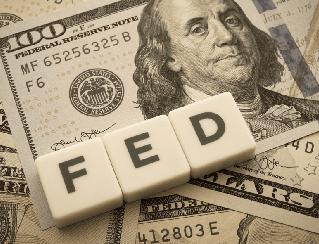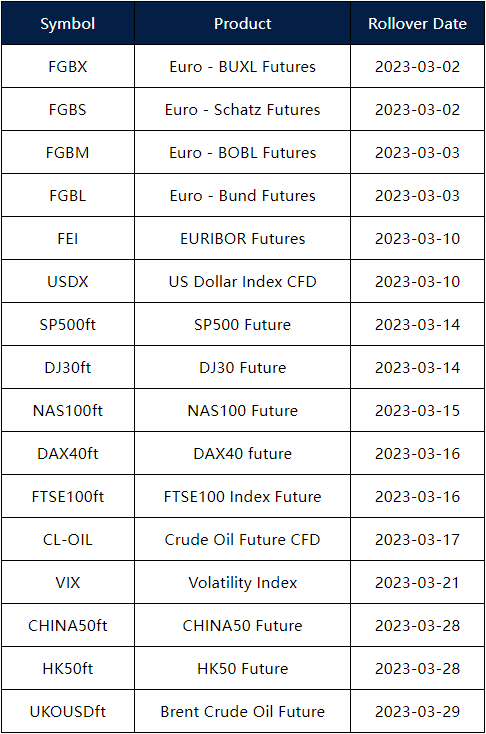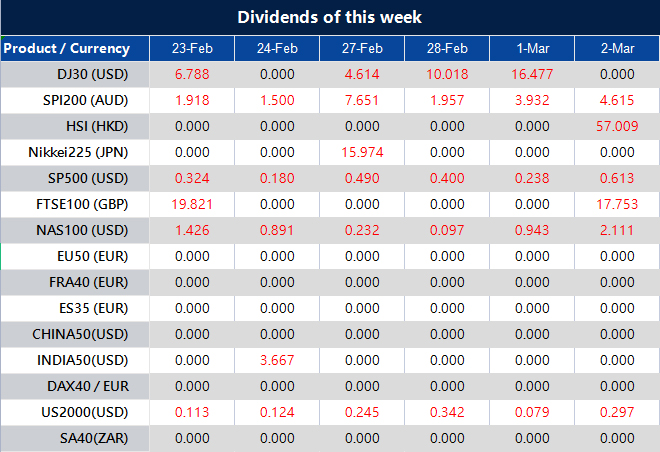US stocks declined lower on Wednesday, witnessing some selling pressure, and dropped for a second straight session after economic data highlighted persistent inflationary pressures and Federal Reserve officials continued to sound hawkish. Data released in the US showed ISM Manufacturing PMI increases to 47.7 in February, which came in below the market expectation of 48.
The PMI report indicated that the economic activity in the US manufacturing sector continued to contract in February, providing some support to the US Dollar. Meanwhile, stock markets witnessed downside pressure as investors are still struggling to ignore fears of more rates from the Federal Reserve. Moreover, hawkish commentaries delivered by Fed policymakers also fueled US Treasury yields as Minneapolis Fed President Neel Kashkari reiterated on Wednesday that inflation in the US is still very high and that their job is to bring it down. The jump in the US Treasury bond yields suggests the market’s fears of inflation and recession, which in turn undermined the stock markets.

The benchmarks, S&P 500 and Dow Jones Industrial Average both declined lower on Wednesday as the S&P 500 closed the day at its lowest level in nearly six weeks as market sentiment remained fragile after Fed officials stay hawkish. The S&P 500 was down 0.5% daily and the Dow Jones Industrial Average meanwhile was little changed for the day. Eight out of eleven sectors in the S&P 500 stayed in negative territory as the utility sector and the Real Estate sector is the worst performing among all groups, losing 1.72% and 1.49%, respectively. The Nasdaq 100 meanwhile dropped the most with a 0.9% loss on Wednesday and the MSCI World index was down 0.3% for the day.

Main Pairs Movement
DXY was lower across the board after the release of China’s manufacturing PMI last month, the highest in over a decade. Price fell 0.45% to 104.40 in late trading New York session on Wednesday. The ISM Manufacturing Index edged up to 47.7 last month, the first increase in six months, but remains in contractionary territory. At the time of writing, the price traded at 104.385.
WTI bulls are in the market amid signs of stronger demand in Asia and Europe. Fundamentally, US commercial crude oil inventories gained less than expected last week, rising only 1,166kbbl. However, US exports of crude hit a record high of 5,629kbbl last week (+22.4% w/w). At the time of writing, the price traded at 77.764.
The Dow Jones Industrial Average rose 5.14 points, or 0.02%, to 32,661.84, the S&P 500 lost 18.76 points, or 0.47%, to 3,951.39 and the Nasdaq Composite dropped 76.06 points, or 0.66%, to 11,379.48.
Technical Analysis
EURUSD (4-Hour Chart)
The EURUSD trimmed gains but held above the critical short-term support level following the release of the ISM Manufacturing PMI, which boosted the US Dollar across the board. Data released in the US showed activity in the Manufacturing sector contracted again in February with the ISM PMI rising from 47.4 to 47.7 (below 50 marks contraction), against a market consensus of 48. The inflation indicators of the ISM report pushed Treasury yields to the upside. The US 10-year bond yield reached 4% for the first time since November. In the Eurozone, the preliminary estimate of the German Harmonized Index of Consumer Prices (HICP) rose at an annualized pace of 9.3% in February, hotter than the previous 9.2% and the 9% anticipated by market players. The news pushed the Euro further up, meaning the ECB could take an even more aggressive stance.

From a technical perspective, the four-hour RSI indicator rallied dramatically to 60 figures as of writing, suggesting that the pair was surrounded by strong bullish momentum. As for the Bollinger Bands, the pair was pricing around the upper band and the size between the upper and lower bands get larger, showing the pair was amid strong positive traction and more favored to the upside path.
Resistance: 1.0788, 1.0929
Support: 1.0508, 1.0400
XAUUSD (4-Hour Chart)
The XAUUSD extended its rally on Wednesday and tried to challenge the $1840 mark in the American trading session despite tepid US macroeconomic figures helping the greenback. Market participants have been moving away from the US Dollar these days amid positive news affecting its major rivals as well as some tepid data. Earlier, the US released the February ISM Manufacturing PMI, which resulted at 47.7, barely improving from the previous 47.4 and missing the expected 48. The survey further showed that “new order rates remain sluggish due to buyer and supplier disagreements regarding price levels and delivery lead times,” indicating persistent price pressures. The report triggered a run to safety, which benefited the safe-haven greenback, however, not for long. Apart from this, the 10-year Treasury note is currently at around 4.0%, and the 2-year note yield hovering near a 16-year high of 4.904%.

From the technical perspective, the four-hour scale RSI indicator edged higher further, showing the upside traction surrounding gold is still strong. As for the Bollinger Bands, the pair was continuing trading along with the upper band and the gap between the upper and lower bands get larger, indicating that the pair’s upside momentum would persist in the near term.
Resistance: 1850, 1870, 1900
Support: 1820, 1800
Economic Data
| Currency | Data | Time (GMT + 8) | Forecast |
| EUR | CPI (YoY) (Feb) | 18:00 | 8.20% |
| EUR | ECB Publishes Account of Monetary Policy Meeting | 20:30 | |
| USD | Initial Jobless Claims | 21:30 | 195K |




































